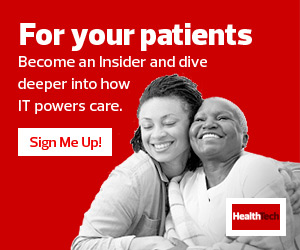Precision Medicine vs. Personalized Medicine: Are They Different?
Precision medicine, also referred to as personalized medicine, helps physicians identify a patient’s unique disease risks and the treatments that will work best for them, according to the Centers for Disease Control and Prevention. The terms are interchangeable, but precision medicine is the most common.
The U.S. Food and Drug Administration explains that many medical treatments are designed for the “average patient” in a “one-size-fits-all” approach, which means that treatments can be successful for some patients but not all. Physicians practicing precision medicine would consider social determinants of health (such as living environment, economic status and lifestyle) and genetic indicators when treating patients.
Precision health, on a larger scale, includes precision medicine and additional practices that occur outside of in-person office visits, such as disease prevention and health promotion activities.
RELATED: Learn how population health and public health differ.
“Precision health involves approaches that everyone can do on their own to protect their health as well as steps that public health can take (sometimes called ‘precision public health’),” states the CDC.
The Obama Administration launched the Precision Medicine Initiative in 2015 to “enable a new era of medicine through research, technology, and policies that empower patients, researchers, and providers to work together toward development of individualized care.” While the concept isn’t new, it is far from being universally implemented.
“In healthcare, we’ve always tried to personalize medicine before it became a slogan or a key term, but it has evolved over time,” says Dr. Peter Hulick, medical director of the Mark R. Neaman Center for Personalized Medicine and head of the Center for Medical Genetics at NorthShore University HealthSystem in Evanston, Ill. “Historically at NorthShore and other institutions, when we first started organizing around personalized or precision medicine, there was a large focus on genomics. While that’s an important facet, genomic information doesn’t sit in isolation as far as how it effects one’s health. We need to consider it, but increasingly we need to be aware of what other things are either interacting with the genome or separately influencing health risk, such as ZIP codes and social determinants of health, to truly deliver on personalized and precision medicine.”
How Technology Enables Precision Medicine
Data is a key aspect of facilitating a precision medicine approach to healthcare, making it critical for healthcare organizations to have a way to manage and analyze vast amounts of patient data. The electronic health record provides a foundation for organizing patient data but doesn’t always enable the efficient use of that data for preventive and precision care.
Hulick describes the healthcare industry as being amid a data explosion, including information drawn from EHRs and data from wearables and tracking apps.
“There’s so much data that it’s becoming overwhelming for anyone to make sense of it,” he says, adding that data is vital for providers to determine the most important next steps for their patients.
At NorthShore, Hulick realized that physicians collecting genomic information were creating another data silo rather than bridging that data with other discrete data types in the EHR. To address this, NorthShore partnered with data intelligence company Sema4 to combine clinical information with genomic analysis using artificial intelligence.
EXPLORE: Providence enhances patient care with data analytics and the cloud.
According to Hulick, progress notes often can’t be captured in routine data extraction. Natural language processing tools can help providers surface that unstructured data so they can derive valuable health insights and determine appropriate courses of action.
“The bigger picture is trying to be more proactive in health. Health systems in general have become more efficient at taking care of the sick, but we don’t do as good a job of preventing disease as we would like in some instances,” he says. “Part of that is because we often think of medical care as binary. You’re either well or you’re sick. You’ve got diabetes or you don’t. You’ve got high blood pressure or you don’t. However, the reality is there are different grades. People may be on a course to have illness, and things can change to redirect them to a more severe or less severe course. What are those signals, and what can we extract from our data to provide insight?”
Technology such as automated alerts from the EHR and scheduling tickets can ensure that important insights from data aren’t missed and are acted upon by the clinician to address a patient’s needs.
Tips for Healthcare Organizations to Implement Precision Medicine
Organizations interested in implementing a precision medicine approach to healthcare need to be early adopters of data analytics and quality improvement, according to Hulick. A preliminary goal might be to show how the organization can create algorithms pertaining to disease that start to drive clinical decision support.
It’s also important to avoid use cases in which there exists a different standard of care across the organization. Hulick suggests picking a space where administration and clinician buy-in already exists; for example, he says, it could be as simple as making sure everyone in a health system has been assessed for risk to a certain genetic condition to determine whether a patient requires a more in-depth hereditary cancer screening. This could be done via basic screening questions on a patient portal prior to an annual physical or primary care visit.
An alert could remind the primary care physician to address the questionnaire if needed, taking the burden off the physician to remember amid competing demands for attention.
Hulick emphasizes that each organization has different problems, and it’s important to use data analytics and precision health to find solutions specific to that organization and its patient population.












